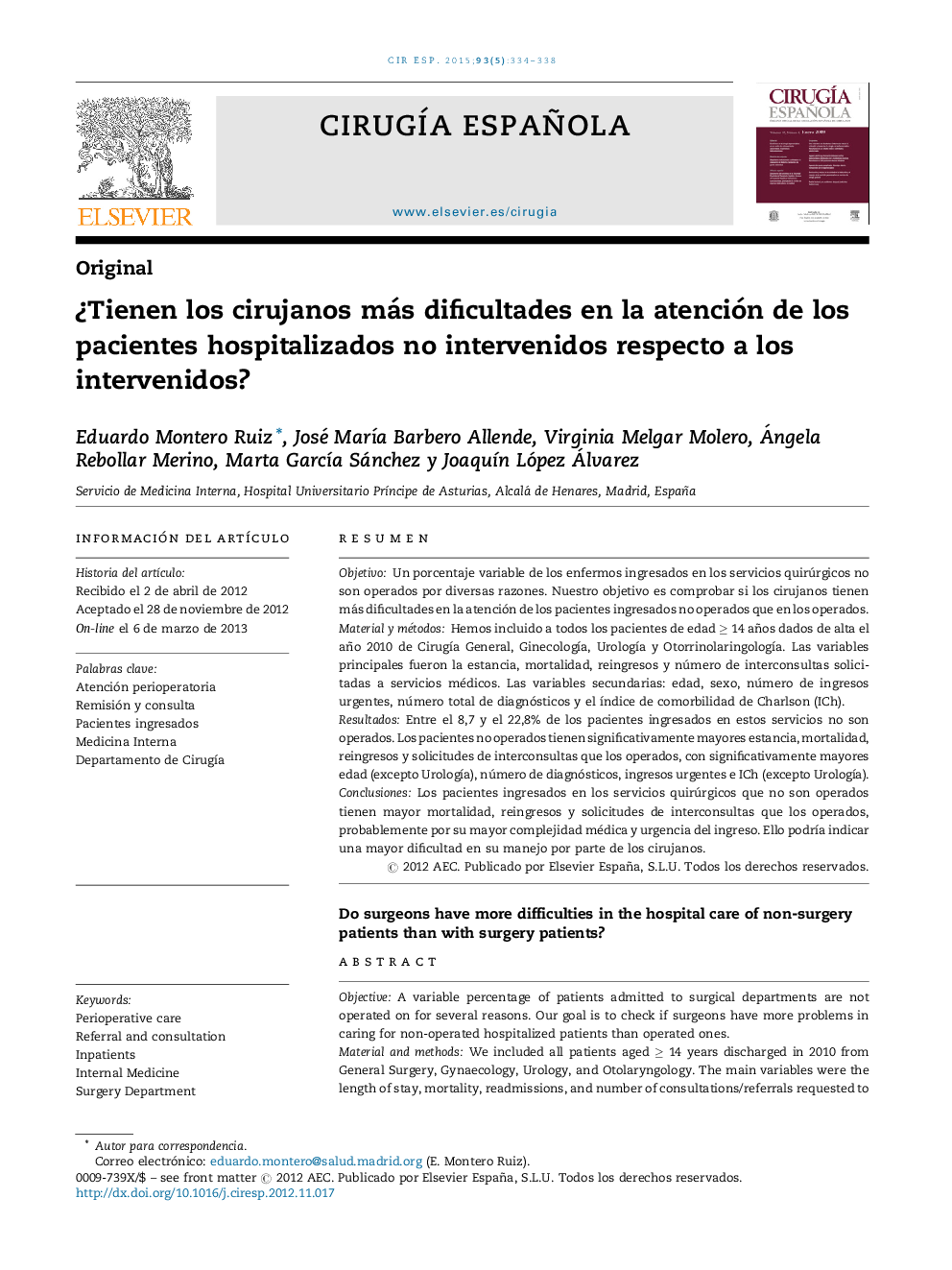| Article ID | Journal | Published Year | Pages | File Type |
|---|---|---|---|---|
| 4252337 | Cirugía Española | 2015 | 5 Pages |
ResumenObjetivoUn porcentaje variable de los enfermos ingresados en los servicios quirúrgicos no son operados por diversas razones. Nuestro objetivo es comprobar si los cirujanos tienen más dificultades en la atención de los pacientes ingresados no operados que en los operados.Material y métodosHemos incluido a todos los pacientes de edad ≥ 14 años dados de alta el año 2010 de Cirugía General, Ginecología, Urología y Otorrinolaringología. Las variables principales fueron la estancia, mortalidad, reingresos y número de interconsultas solicitadas a servicios médicos. Las variables secundarias: edad, sexo, número de ingresos urgentes, número total de diagnósticos y el índice de comorbilidad de Charlson (ICh).ResultadosEntre el 8,7 y el 22,8% de los pacientes ingresados en estos servicios no son operados. Los pacientes no operados tienen significativamente mayores estancia, mortalidad, reingresos y solicitudes de interconsultas que los operados, con significativamente mayores edad (excepto Urología), número de diagnósticos, ingresos urgentes e ICh (excepto Urología).ConclusionesLos pacientes ingresados en los servicios quirúrgicos que no son operados tienen mayor mortalidad, reingresos y solicitudes de interconsultas que los operados, probablemente por su mayor complejidad médica y urgencia del ingreso. Ello podría indicar una mayor dificultad en su manejo por parte de los cirujanos.
ObjectiveA variable percentage of patients admitted to surgical departments are not operated on for several reasons. Our goal is to check if surgeons have more problems in caring for non-operated hospitalized patients than operated ones.Material and methodsWe included all patients aged ≥ 14 years discharged in 2010 from General Surgery, Gynaecology, Urology, and Otolaryngology. The main variables were the length of stay, mortality, readmissions, and number of consultations/referrals requested to medical services. Secondary variables were age, sex, number of emergency admissions, total number of diagnoses, and the Charlson comorbidity index (ICh).ResultsBetween 8.7% and 22.8% of patients admitted to these surgical departments are not operated on. The non-operated patients had a significantly higher stay, mortality, readmissions and consultations/referrals requests than operated ones, with significantly higher age (except Urology), number of diagnoses, emergency admissions and ICh (except Urology).ConclusionsPatients admitted to surgical departments and are not operated on have higher mortality, readmissions and consultation/referrals requests than those operated on, which may be due to their greater medical complexity and urgency of admission. This suggests a greater difficulty in their care by surgeons.
